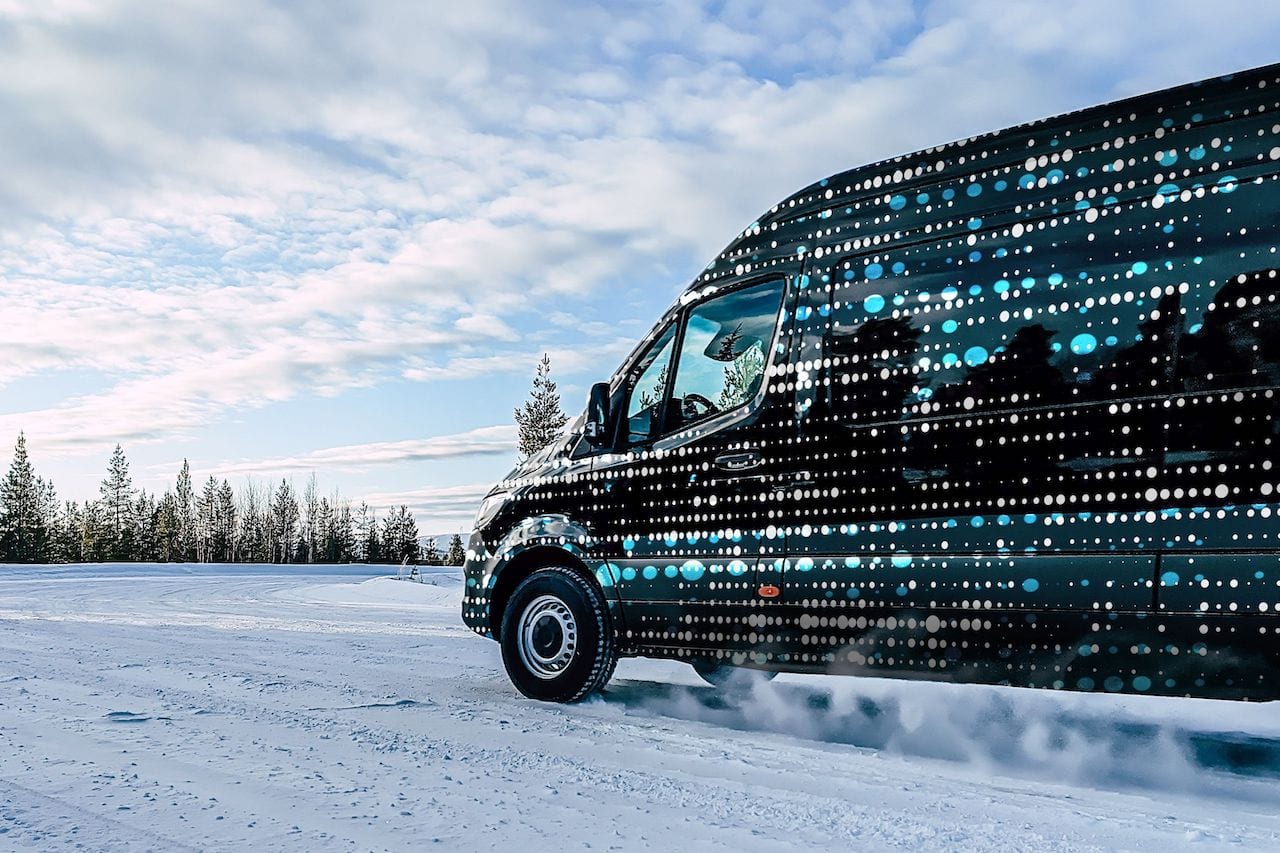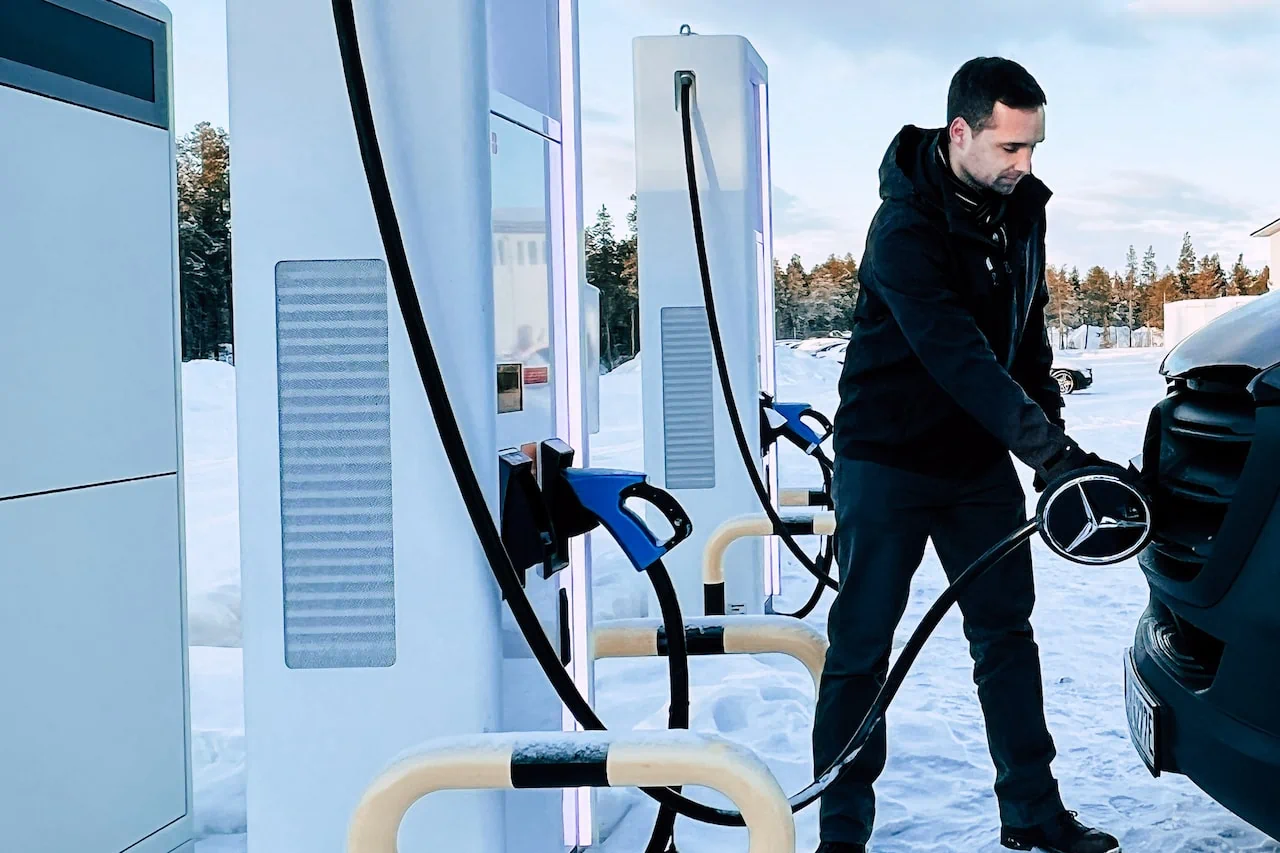Next-generation of the eSprinter Continues Winter Testing
Customers place the same demands on battery-electric vans as they do on their counterparts with combustion engines
After all, commercial customers depend on their van not letting them down even in ice and snow. That's why Mercedes-Benz Vans tests all its electric vans under extreme climatic conditions, such as on snowy and icy roads, snowy winds, and temperatures as low as minus 30 degrees. A real endurance test for both the vehicle and the development team.
At the demanding test site in Arjeplog, Sweden, near the Arctic Circle, the vehicles are subjected to a variety of tests, including the effects of extreme cold on handling, ergonomics, thermal management, and interior comfort. In addition, the vehicles are cooled down in cold chambers before the start of the journey to check the cold protection of drive components, heating systems, software, and interfaces. The charging behavior and charging management are also examined and optimized in detail.
After just over half of the test period, which lasted several weeks, it was already clear: The next generation eSprinter defied ice and snow, extreme cold and mastered even the most demanding test cycles, Mercedes-Benz said in a recent statement.
The requirements for the next eSprinter generation were defined in close cooperation with customers, for example from the CEP sector (courier, express, and parcel service), as well as body manufacturers.
With three batteries and numerous body variants from panel van to chassis for box bodies, the next generation eSprinter is not only intended to open up new customer segments, but also new markets, including the USA and Canada. The range will more than double compared to the current eSprinter, depending on the configuration, Mercedes-Benz promises. This means that a range of more than 300 kilometers can be expected; the current generation of the eSprinter manages up to 158 kilometers in the WLTP test cycle.

Production of the next-generation eSprinter will start successively, beginning in the second half of 2023 in Charleston (South Carolina, USA), followed by Düsseldorf and Ludwigsfelde. A central guiding principle at Mercedes-Benz is sustainability: the next generation of the eSprinter will be produced in a CO2-neutral manner.
Mercedes-Benz has invested around 350 million euros in the next generation eSprinter. Around 50 million euros will be invested in adapting production at each of the three plants.
Mercedes-Benz says it is convinced of the ecological and economic advantages of battery-electric vans, has firmly anchored its claim to leadership in electric mobility in its strategy, and is consistently electrifying all model series. Bodybuilders and customers can already choose from four battery-electric vans: the eSprinter, the eVito panel van, the eVito Tourer, and the EQV.
In addition, the new eCitan, the electric Small Van for commercial use, and the electrified variant of the T-Class, the Small Van for families and leisurely people, are to expand the locally emission-free product portfolio of Mercedes-Benz Vans this year.
The course has been set for an all-electric future. By the end of the decade, the brand with the star wants to be ready to go fully electric - wherever market conditions permit. This means that from 2025 onwards, all new vehicle architectures are to be exclusively electric. Accordingly, Mercedes-Benz Vans will also develop a new, purely electric vehicle architecture for the third eVans generation. It bears the name VAN.EA, and the first vans based on VAN.EA is to come onto the market from the middle of the decade.
